T-40 light tank
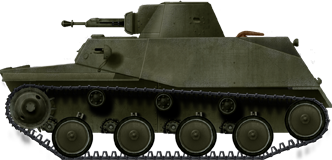
 Light amphibious tank (1940-41) Soviet Union - 443 built
Light amphibious tank (1940-41) Soviet Union - 443 built
The last Soviet light amphibious tank of WW2
The T-40 logically followed the interwar T-38 and T-37, both based on the 1930's Vickers Amphibious tankette. At the end of 1938, the special Research Department of factory No.37., under Chief Engineer N.A.Astrov, had to come up with a better design overall. The result was indeed an improvement in every direction. However, when it came into production in 1940, things took a different course. In the summer of 1941, after the German invasion, decisions had to be made to rationalize tank production and, since the T-40 was more complicated than a standard light tank, it was eliminated and the program terminated, which explains the small quantities delivered. No amphibious tank will be designed in the USSR before 1949 (ASU-76), but the T-40 was a solid proposition even then.Design of the T-40
Aside the different shape, much taller, the hull was all-welded (riveted in previous models) and watertight, but with reworked shapes for better buoyancy and hydrodynamics. There was a special water deflector and the hatches were hermetically sealed. The compartmentalization now allowed access to the engine from inside. The former two leaf-sprung bogies of the suspension gave way to four pairs of roadwheels independently sprung on torsion arms, with an extra pair of rear tensioners, and front drive sprockets. The narrow tracks were supported by three return rollers per side. There was no catwalk, the hull being directly sloped in overhang of the tracks. The tank was still small overall, with a two man crew (driver sat in the front center, commander in the turret, offset to the right, while the engine was located to his left), but the fighting compartment was roomier than previous models. The driver had two periscopes and the commander three. There was also an Aviapribor magnetic compass and a 71-TK-3 16 km (9.94 mi) range radio.This allowed the addition of heavier armament, a "Dushka" (DShK) heavy machine gun supplementing the light DT machine-gun. The DShK could fire at 4000 m (2.49 mi) with HE-AP B-30 and B-32 incendiary rounds. This firepower enabled it to engage light tanks and armored cars (penetrating 16 mm/0.63 in of vertical armor from a distance of 300 m/328 yd), while the sloped frontal armor, 13 mm (0.51 in) at the thickest, could either stop or deflect heavy machine-gun rounds. The designers also improved the protection of the rear propeller, which was set into an indent in the hull rear. Range was increased thanks to two fuel tanks of 100 liters each.
Production
The new tank was accepted in service in December 1939. Production was set up to start in October 1940 and its was intended to replace all previous models (several thousands of amphibious tanks). However these plans were shattered in the summer of 1941. At the same time, more light tanks were needed, and the T-40 chassis was simplified and derived into the T-60. The latter became the Soviet standard light tank of the war, being produced to over 6000 examples until 1945. The costlier and more complicated T-40 was no longer considered a priority. The production was cut short and the factory lines later were relocated in the Ural, only producing T-60s. Total production ranges from 222 to 443*.*english.battlefield.ru
The T-40 in action
Due to their small numbers, the T-40 never replaced the older models in all the reconnaissance units they were intended for, but deployed in Brigades of mixed composition. From the winter of 1941 there is a profusion of photos showing the T-40 in operation. After these events, the T-40 became a rare occurrence, most being lost in action, and a few were apparently kept for training until 1946. There was a single known variant of this vehicle. The last production batch of this vehicle was given BM-8-24 Katyusha rocket racks instead of the turret. Their fate is unknown. A single T-40S with a TNSh-20 automatic gun and a "Tarkomat" with a 23 mm (0.91 mm) PT-23TB automatic gun were also tested. The T-40S received a flat rear plate, a 20 mm (0.79 in) ShVAK gun, and only a few were produced until the whole production was terminated.T-40 specification |
|
| Dimensions (L-w-h) | 4.10 x 2.33 x 1.90 m (161 x 91 x 74 in) |
| Total weight, battle ready | 5.9 tons (11,800 lbs) |
| Crew | 2 (driver, commander/gunner) |
| Propulsion | GAZ-202 70 hp (52 kW), Power/weight12 hp/tonne |
| Top Speed (land) | 45 km/h (28 mph) |
| Max. Op. Range | 450 km (280 mi) |
| Armament | Main: 12.7 mm DShK machine gun (0.5 in)
Secondary: 7.62 mm DT machine gun (0.3 in) |
| Armor | 4 to 13 mm (0.1-0.45 in) |
| Total production | 443 |
Links and sources
The T-40 on Wikipedia - On Battlefield.ru - On ww2photos.se
Early production T-40, 1940.
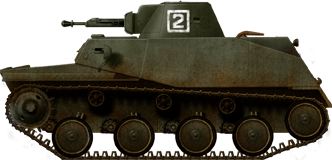
T-40 of a composite brigade in the summer of 1941.

Camouflaged T-40 in the fall of 1941.
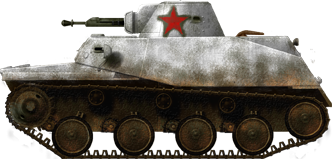
T-40 near Moscow, 1941.
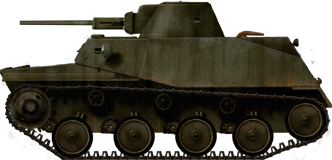
T-40S (armed with a 20 mm/0.79 in autocannon later adopted on the T-60 and T-70), Moscow area, winter 1941-42.
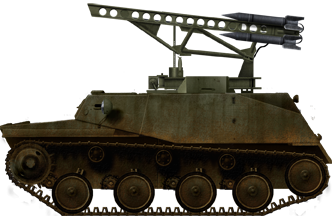
T-40 BM 8-24 Katyusha rocket launcher in 1942.
Gallery





For all : Credits Kubinka Museum (Odintsovsky District, Moscow Oblast) - Wikimedia commons.

WW2 Tanks




























WW2 tanks posters

All Tiger tanks liveries.

Panther liveries and variants

WW2 Armour - All tanks











Tanks aces and single tanks series

Find more there

Museums, Movies, Books & Games
The Tanks and Armor in pop culture
Tanks and armored vehicles in general are only really grasped when seen first person: The mass, the scale, it's all there. Explore also the way tanks were covered in the movie industry, in books and in video games.Movies:
Best tanks movie on warhistoryonline.com
On imdb.com
On bestsimilar.com/
miltours.com
liveabout.com/
watchmojo.com
Video Games:
pcgamesn.com
historyhit.com
levvvel.com
vg247.com/best-tank-games
mmobomb.com/
alienwarearena.com
